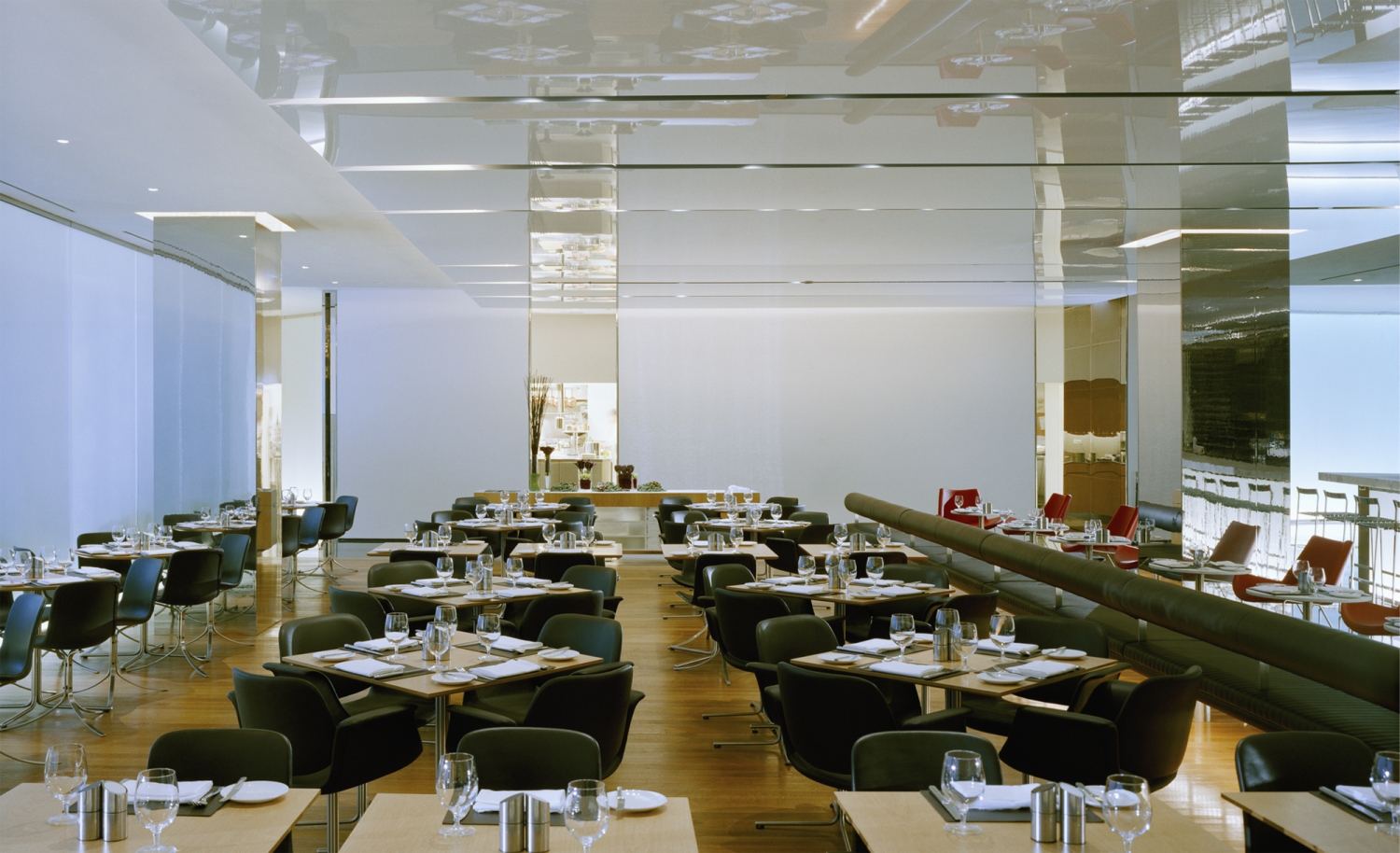NYC Restaurants' 'Hospitality Included' Movement
/The movement to get rid of tipping in New York City restaurants has been slowly picking up steam since Danny Meyer announced in October that he was going to do away with the practice at his Union Square Hospitality Group’s 13 full-service restaurants in the city.
I mean, restaurants aren’t exactly lining up to upend their business models and try to change the cultures of their servers as well as their customers, but more restaurants are trying it than I would have expected. After all, so far even USHG has only implemented the “Hospitality Included” approach at one of its restaurants, The Modern.
That approach differs from the more common practice of tacking on an automatic service charge. Instead, the actual prices on the menus are raised.
Meyer told me shortly after announcing his plans that he thought raising menu prices was a more honest approach, and also that the New York City Department of Consumer Affairs might frown on such service charges being redistributed to anyone but servers — something his lawyers warned him about.
And the main point of getting rid of tipping is to put that money elsewhere — mainly in the hands of underpaid kitchen staff.
There are other reasons: Creating a more professional working environment for servers, eliminating the discriminatory tipping practices of customers — such as tipping scantily clad female servers more or servers with foreign accents less — and generally allowing restaurant management to regain control of the roughly 20 percent of the restaurant’s income that comes from tips.
Rising costs of doing business has resulted in menu prices going up for years, and as those prices go up, the disparity between what servers make — coming mostly from tips which are mostly a percentage of their customers' bills — and kitchen staff make, has widened, worsening an already not awesome cultural divide between front-of-house and back-of-house, and making it harder to recruit kitchen staff.
These and other issues we’re being considered and discussed before Meyer decided to pull the trigger with The Modern, but since then, other operators have come on board, including Will Guidara and Daniel Humm at Eleven Madison Park (but not at their other restaurant, The Nomad), Andrew Tarlow, who runs five restaurants in Brooklyn (and implemented Hospitality Included at one of them, Roman's, on January 18), Gabriel Stulman of six-unit Happy Cooking Hospitality (he got rid of tipping at one restaurant, Fedora, at the beginning of January), and Nate Adler, who went all in with Hospitality Included on December 14 at his single restaurant, Huertas.
Stulman and Adler recently joined Leah Campbell, from Andrew Tarlow's team, and USHG chief restaurant officer Sabato Sagaria on a panel at Journee, a new club for education and networking among hospitality workers, to discuss what they’d learned.
What they learned is that getting buy-in from their servers wasn’t that hard. Or it might be more appropriate to say that they suspected what they needed to do to get buy-in from servers and they did it. They of course gave them raises to at least $9 per hour, which became the statewide minimum wage this year, anyway, and implemented a revenue-sharing program in which a certain percentage of top-line sales was shared with servers — 8 percent or revenue at The Modern, more at some of the other restaurants. Adler also gave raises to line cooks, who now get $12, and other back-of-house workers to $11, and he implemented revenue sharing across the board. The other panelists are hoping to be able to share revenue with kitchen staff eventually, but they're not doing it yet.
They also have included their servers into the planning process. Sagaria said they laid out a roadmap for career progression for front-of-the-house and back-of-the-house staff. Others have tapped their servers’ motivation to make more money through revenue sharing to brainstorm new money making ideas, which is why Roman's is introducing pizza brunch.
All of the restaurants have implemented the revenue sharing on a weekly basis, and are doing it across the board, so whether the servers are working on a slow Tuesday lunch or a crazy Friday dinner rush, they share equally, based on how many shifts they work.
Adler said that once he explained his plan and reasoning behind it, the servers actually encouraged him to implement it.
But has service gotten worse now that servers don’t have direct and immediate motivation to be gracious and speedy with their customers?
Not according to Sagaria, who has gotten about 1,000 comment cards at The Modern since they got rid of tipping — a staggering number — and they have been largely positive. Furthermore, their Open Table scores on food, experience, service, etc., have gone up in “almost every single category,” he said.
He said Yelpers have been mostly silent about the change, except for the occasional tangential bit of snark, such as, “When the bread came out it wasn't warm, probably because there’s no tipping.”
However, it’s proven a bit more difficult to convince customers that a $25 entrée with the gratuity included is basically the same as a $20 entrée if you need to add a tip.
Stulman said he’s seeing his customers ordering less — skipping appetizers or splitting entrées. Since he raised the price of his steak from $34 to $39, sales have plummeted, even though customers would leave a $6 or $7 tip on that $34 steak, meaning they'd actually be spending less under the new system.
“I think there is a problem with value perception,” he said.
Sagaria said he has seen less of that with food, which he said people order with their stomachs.
“You’re saying, 'O.K., what am I hungry for?’ It’s not ‘Do I want the $40 chicken, or the $30 chicken or the $20 chicken?’”
But wine’s a different story, he said, and people used to buying and $80 wine and tipping $20 balk at buying a $100 bottle without tipping.
He said to try to address that they’re putting their “Hospitality Included” message on every page of the wine list rather than just the front page and table of contents, but Stulman was skeptical.
“Messaging is something we put a ton of effort into,” he said. “When you go to Fedora’s web site, bam! We’ve replaced the first picture with a message that says ‘Gratuity Free.’ We use Resy as our reservations platform. When you go on Resy there is a message right on our restaurant’s message that says ‘Gratuity free. No need to tip.’ When you make a reservation, in your email confirmation, we inform you that the menu prices reflect all service and you do not need to tip. Then, you get a text message 30 minutes before your reservation that reminds you that you have a reservation in half an hour, and that text message says, ‘No tipping.’ When you arrive, we have a wonderful graphic ... on the front and back of our cocktail list. Either side you flip it, you see it. That [gratuity free] logo is on the dinner menu. I, personally, have been the maître d’ for half a dozen of the last dozen shifts. When I seat every guest myself [I tell them] ‘I just want to let you know that we have eliminated tipping at our restaurant and our prices reflect that change. Please, no need to leave anything else.’’
But people still don’t want to buy the steak that used to be a top-selling item.
It’s early days yet, and maybe people will adjust. But there’s a reason $8.95 is a more common menu price than $9. Value perception is a tricky thing, and time will tell if customers will come around.
(via Nation's Restaurant News)







